Last Updated on June 24, 2024 by teamobn

Believe it or not, there are insects that are actually beneficial for your garden. The most common ones are flying pollinators and ladybugs. Today, garden enthusiasts build garden bug hotels to attract these beneficial insects. A hotel for garden bugs may seem like a weird idea but yes, they do exist.

These garden bug hotels are winter lodgings for insects. They’re usually made out of upcycled materials such as pallets or wood boards and are filled with bug-friendly materials. These may include sticks, pinecones, corks, or straws, depending on your lodgers.
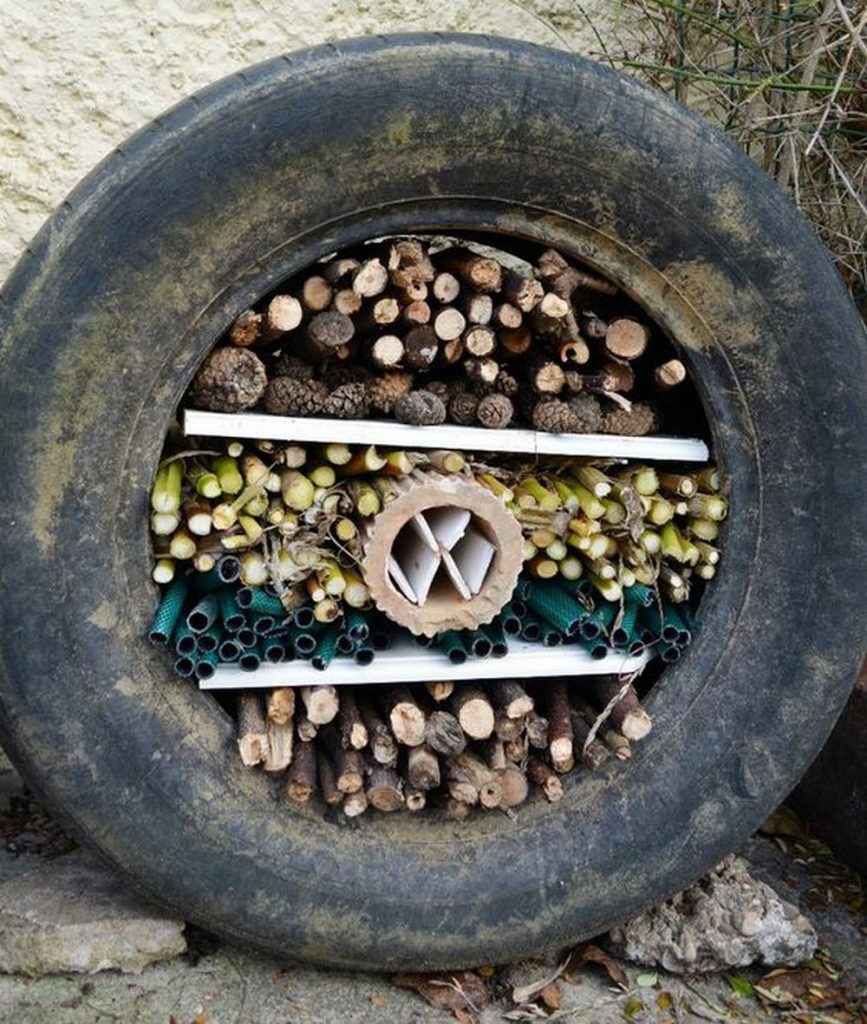
My husband made a garden bug hotel for my mother-in-law who’s an avid gardener. And boy did she love it! Last winter, her bug hotel had a lot of occupants. When spring came, her garden was flourishing! You should try this, too. It’s easy to make and the benefits are plenty!
Building a Bug Hotel
Contents
Materials
- Prunings, sticks, straws, bricks, old pieces of wood
- Wood or pallets
- Thin shingles
- String
- Hollow stems
- Screws
- Tacks
Tools
- Drills
- Hammer
- Pruner
- Screwdriver
Instructions
Plan Your Design
- Decide on the size and shape of your bug hotel. Consider a box-like structure for simplicity.
- Sketch a basic design to visualize where each material will go.
Prepare the Frame
- Use wood or pallets to create the main frame of your bug hotel. This will be the housing for all your materials.
- Cut the wood to your desired dimensions. A common size is about 12×12 inches but feel free to adjust based on available space and materials.
- Assemble the frame using screws and a screwdriver. Ensure the frame is sturdy and stable.
Add the Roof
- Attach thin shingles to the top of your frame to create a roof. This will protect the bug hotel from rain.
- Secure the shingles using tacks and a hammer. Overlapping the shingles slightly will provide better coverage.
Prepare the Filling Materials
- Collect prunings, sticks, straws, bricks, old pieces of wood, and hollow stems.
- Use a pruner to cut these materials into small pieces that fit inside your frame. Aim for a variety of sizes and shapes to cater to different insects.
Assemble the Interiors
- Start filling the frame with your materials. Arrange them in layers or sections based on type:
- Prunings and Sticks: Place horizontally or vertically to create small gaps and crevices.
- Straws and Hollow Stems: Bundle together using string, and insert into the frame to provide nesting spaces for bees.
- Bricks and Old Wood: Stack to create solid sections with holes and spaces for shelter.
Secure the Materials
- Use screws or tacks to secure larger items like bricks and pieces of wood. This prevents them from shifting.
- Tie bundles of straws or hollow stems with string and tuck them tightly into the frame.
Finish and Inspect
- Ensure all materials are packed securely but still allow small gaps for insects to enter.
- Check for sharp edges or loose pieces that could fall out. Use the pruner to trim any protruding ends.
Install the Bug Hotel
- Choose a location in your garden that is sheltered from strong winds and receives partial sunlight.
- Position the bug hotel at least a few inches off the ground to avoid moisture and predators.
- Attach the bug hotel to a post or wall using screws if necessary, or place it securely on a flat surface.
Maintain Your Bug Hotel
- Periodically check the hotel to ensure it’s in good condition. Replace any worn or weathered materials as needed.
- Clean out old or decomposing materials annually to keep the space inviting for new insect guests.
Observe and Enjoy
- Watch as beneficial insects take residence in your new bug hotel. Document the different species you attract and their impact on your garden.
Click on any image to start the lightbox display. Use your Esc key to close the lightbox.
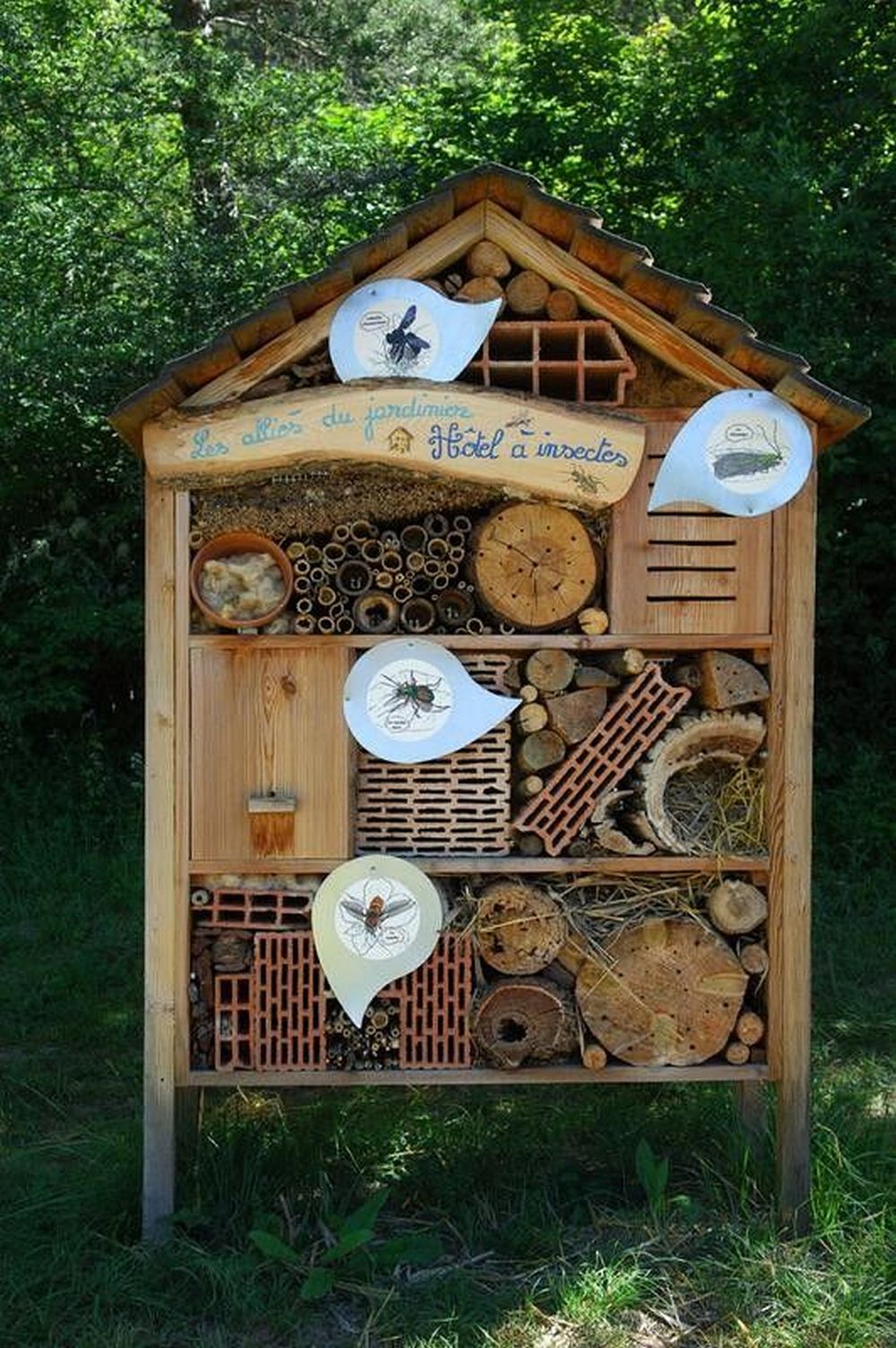
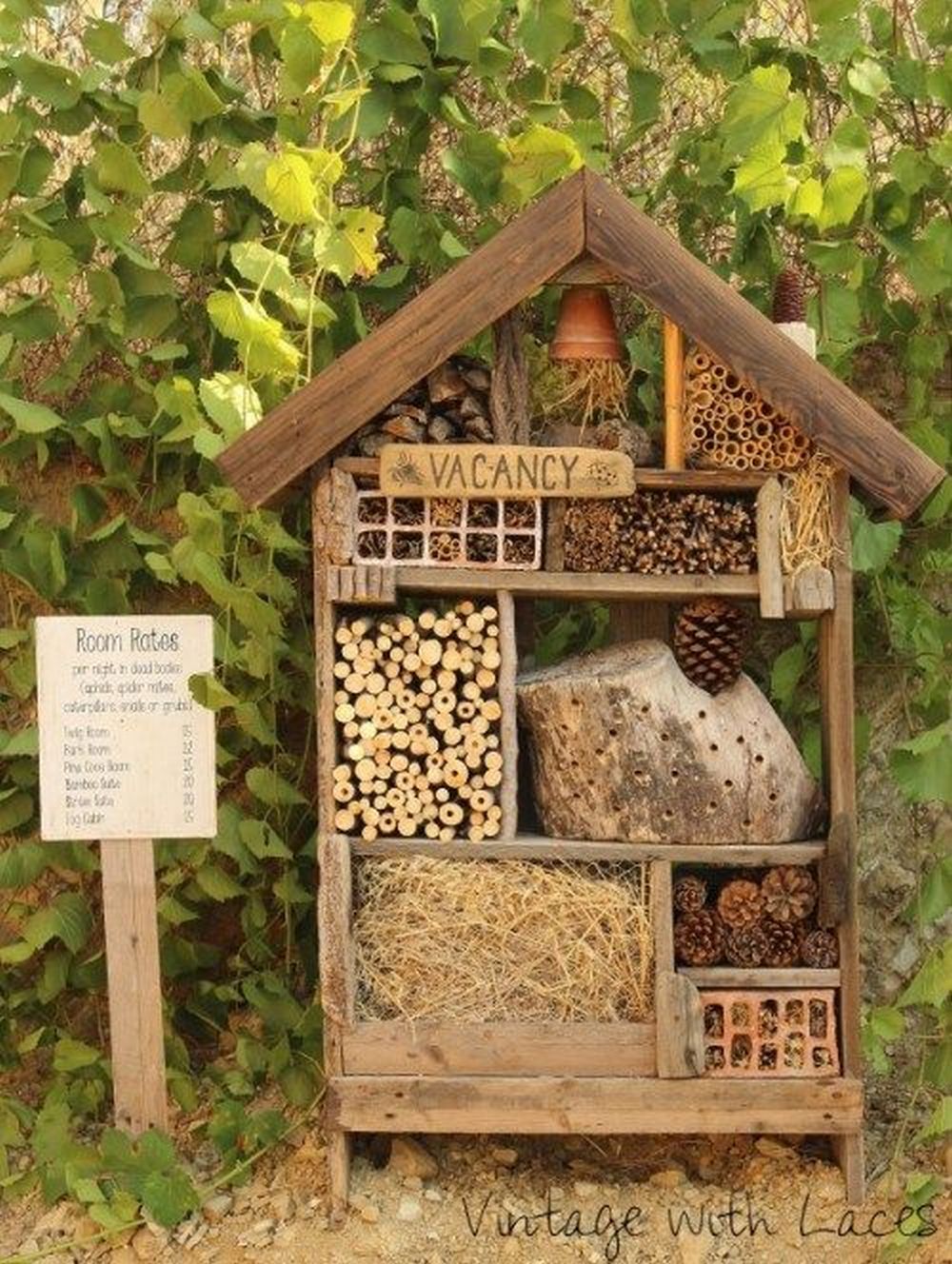
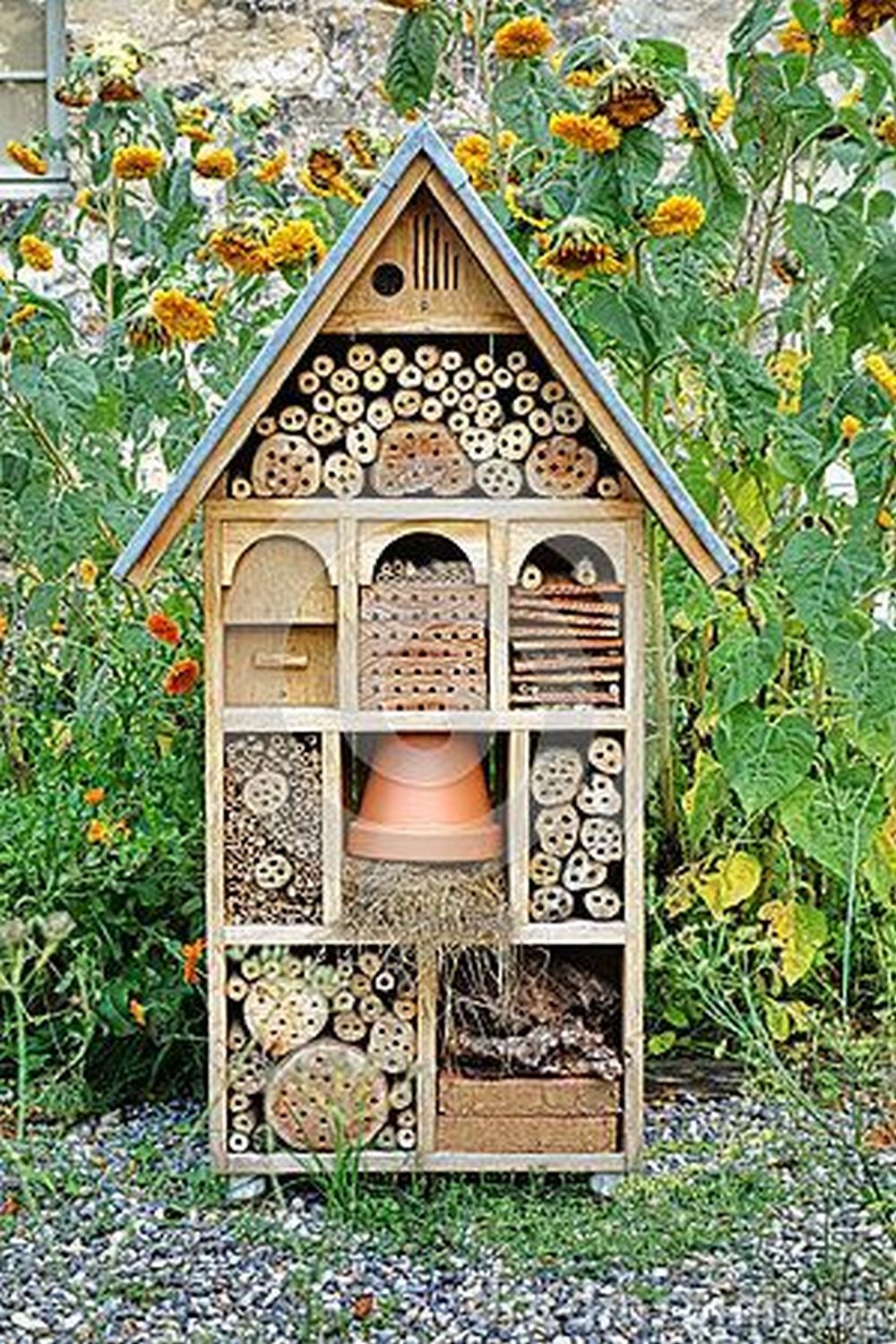

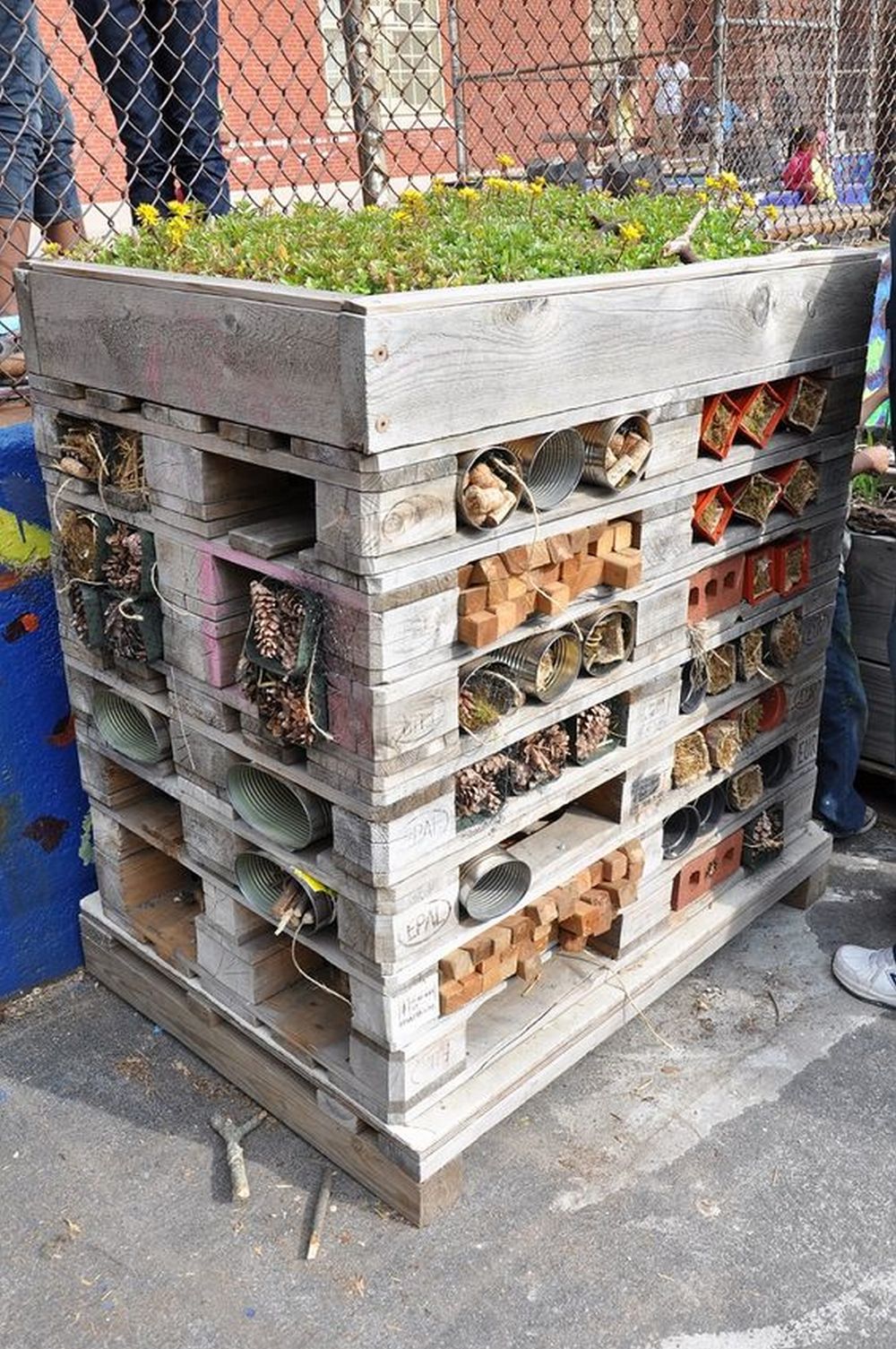
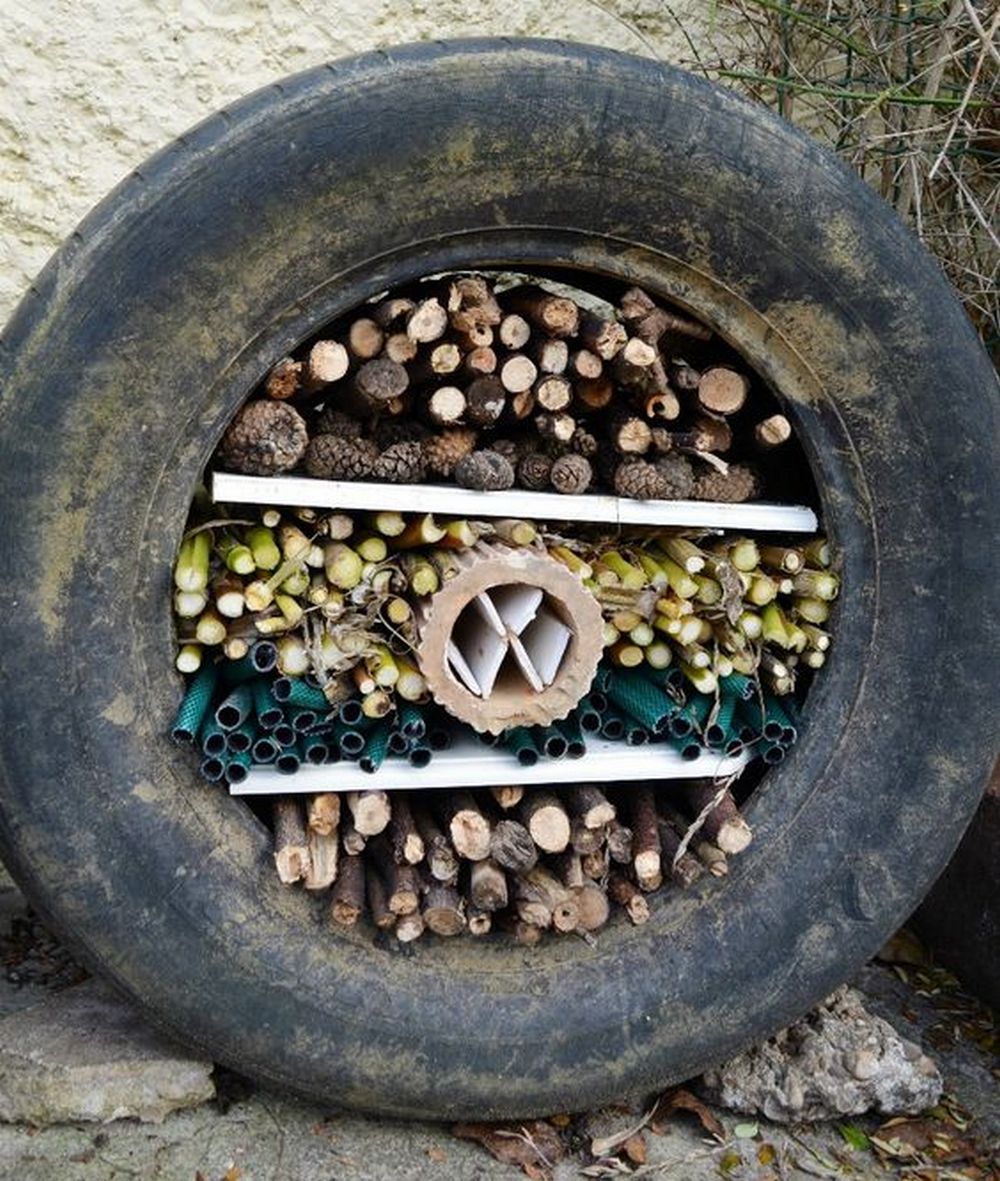
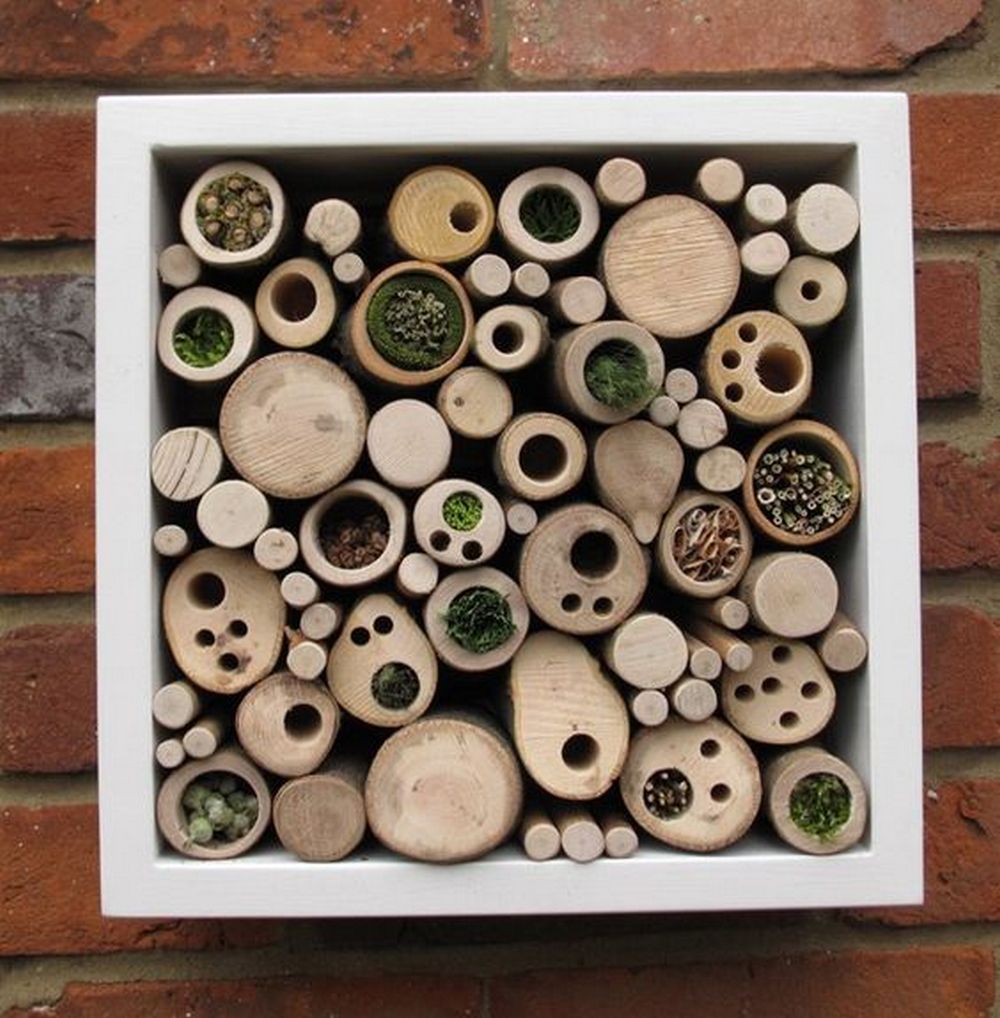


For a visual guide, check out the video below.
Benefits of Having a Bug Hotel in Your Garden
Supporting regional animals and improving the ecology of your garden can be achieved by including a bug hotel. These buildings give helpful insects vital refuge, which improves and brightens the garden environment. Let’s examine the many advantages of including a bug hostel in your yard.
Natural Pest Control
Many insects drawn to a bug motel naturally prey on common garden pests. Aphids are fed on by ladybugs, for example, and flies and other small insects are helped to regulate by spider populations. When you give these helpful animals a safe refuge, you lessen the need for chemical pesticides and encourage horticulture that is more sustainable and organic.
Enhanced Pollination
Many plant reproductive cycles depend heavily on pollinators such solitary bees and butterflies. These insects can relax and nest at bug hotels. Better flower and fruit output brought forth by increased pollinator activity makes a garden more abundant overall. Fruit trees and vegetable gardens will find this especially helpful.
Biodiversity Support
The environments that bug motels offer to different insect species contribute to biodiversity. Particularly crucial in developed or metropolitan regions where natural habitats are frequently few, is this. Encouragement of a wide variety of insects contributes to the general health of the ecosystem and helps preserve ecological equilibrium.
Soil Improvement
Some insects that find refuge in bug hotels, such as beetles and ants, are excellent at aerating and enriching the soil. Their activities help decompose organic matter, returning nutrients to the soil and improving its structure. Healthier soil supports robust plant growth and resilience against diseases.
Educational Opportunities
Having a bug hotel in your garden provides a wonderful opportunity for learning and observation. Children and adults alike can explore the fascinating world of insects, gaining insights into their behaviors and life cycles. This hands-on educational experience fosters a deeper appreciation for nature and the delicate interconnections within ecosystems.
Garden Aesthetics
Bug hotels can be a charming addition to your garden’s landscape. They come in various shapes and sizes, from simple wooden boxes to intricate structures. Integrating a bug hotel into your garden design adds a touch of creativity and a rustic, natural aesthetic.
Contribution to Conservation
By providing shelter for insects, you contribute to conservation efforts for many species facing habitat loss. This small action can have a significant impact, helping to sustain populations of insects that are vital to our environment but often overlooked.
A bug hotel is more than just a quirky garden feature. It’s a vital resource for beneficial insects that enhance the health and productivity of your garden. By attracting natural pest controllers, pollinators, and other valuable insects, you create a thriving, self-sustaining ecosystem. Embrace the benefits of a bug hotel and enjoy a flourishing garden full of life and diversity.
Types of Insects Attracted to Bug Hotels
Interesting constructions called bug hotels provide a refuge for a variety of helpful insects. Garden biodiversity is greatly increased and ecological balance is promoted by these insect-friendly habitats. You may create a more useful and friendly environment for these little garden friends by knowing the kinds of insects that stay at bug motels.
Solitary Bees
Mason and leafcutter bees are two of the most often found solitary bees in bug hotels. Solitary bees do not reside in colonies as do honeybees. Like the hollow stems and tubes found in bug motels, they like to nest in little, private areas. Excellent pollinators, these bees can greatly increase the output of your garden plants.
Ladybugs
Aphids and mites are among the many garden pests that ladybugs—also referred to as ladybirds or lady beetles—ferociously hunt. To hibernate over the winter, they look for cracks and little cavities. Ladybirds find the ideal refuge in bug hotels, where they may rest safely and emerge prepared to defend your garden in the spring.
Lacewings
Highly useful for controlling pests, lacewings are small green insects with lace-like wings. Known by many as “aphid lions,” their larvae are especially helpful since they consume a variety of dangerous garden pests. Insect hotels made of dry leaves or straw that resemble their natural environment draw lacewings.
Beetles
Various beetle species, including ground beetles and rove beetles, can be drawn to bug hotels. These beetles are excellent decomposers and play a vital role in breaking down organic matter. By doing so, they help recycle nutrients back into the soil, promoting healthier plant growth. Beetles appreciate the nooks and crannies created by logs, bricks, and other coarse materials in bug hotels.
Spiders
While some people might be wary of spiders, these arachnids are beneficial predators in the garden. They help control populations of flies, mosquitoes, and other small insects. Spiders often take refuge in the dark, undisturbed areas of bug hotels, such as beneath pieces of bark or within gaps in stacked wood.
Hoverflies
Hoverflies, also known as syrphid flies, are often mistaken for bees due to their similar appearance. They are important pollinators and their larvae are effective in controlling aphids. Hoverflies are attracted to bug hotels that offer sheltered, dry spaces for their larvae to develop.
Woodlice
The little crustaceans known as woodlice, or pill bugs, are at home in damp conditions. They are necessary to return nutrients to the soil and to break down decomposing organic matter. For woodlice, wet, shady spaces full of rotting wood or leaves make the perfect home.
Earwigs
Aphids and other tiny pests are the diet of earwigs, nocturnal insects. In moderation, they help your garden break down and are helpful. They can withdraw and rest during the day in bug motels.
Many helpful insects, each with a special function in preserving a healthy garden ecology, are drawn to bug motels. In the warm cavities of bug hotels, a variety of insects—from pest controllers like ladybugs and spiders to pollinators like solitary bees and hoverflies—find sanctuary and breeding grounds. Knowing their wants and preferences will enable you to create a bug motel that will encourage and nurture these important garden assistants.
Conclusion
Building a bug hotel is a simple and rewarding project that benefits your garden and supports local wildlife. It provides shelter for beneficial insects, enhancing pollination and natural pest control. With just a few materials and tools, you can create a thriving habitat that brings your garden to life.








